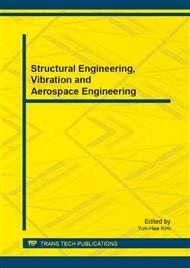p.317
p.322
p.326
p.331
p.335
p.341
p.346
p.350
p.355
A Noval Information Management Method of Text Recognition Based on Ontology Semantic Domain
Abstract:
In today's network environment, the semantic gap between machine language and human language is the most important challenge of information management. Processing of text plays an important role in information management and knowledge management. In this paper, a proposed method shows how a text is related to its background knowledge. By background knowledge, People mean the parts of domain ontology which are not expressed in the text, but are shared by the creator and potential readers. Given the text-ontology mapping, people may discover the semantic domain of a text and how the text covers the domain knowledge. The semantic relatedness between the concepts mentioned in a text, as a whole unit,and the other concepts of the domain should be measured. This measure is based on the semantic relations defined by the ontology among its concepts. The experimental results prove that proposed method presents better overall performance and is natural way to improve retrieval results of users needed.
Info:
Periodical:
Pages:
335-340
Citation:
Online since:
December 2013
Authors:
Price:
Сopyright:
© 2014 Trans Tech Publications Ltd. All Rights Reserved
Share:
Citation:


